Debugging vs-android projects with VisualGDB
This tutorial explains how to debug native Android projects made with vs-android in Visual Studio
- First ensure that your vs-android project can be built properly. If you cannot make it work, please consider using VisualGDB Project wizard instead. In this tutorial we will use the san-angeles project from the vs-android samples.
- Download the latest VisualGDB. If you are using custom installation, ensure that Android Edition is selected for installation:
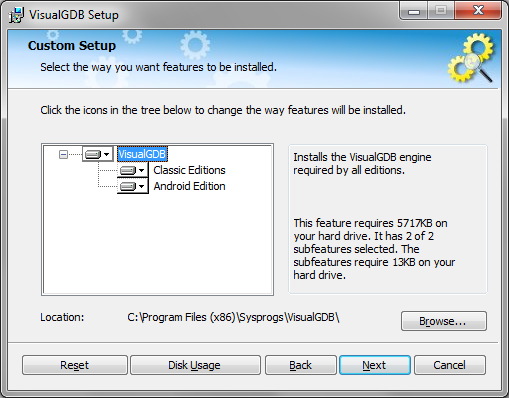
- Open Visual Studio, click at Android->Setup SDK/NDK locations. Enter the locations of your Android tools or use the “Detect” buttons to try detecting them automatically:
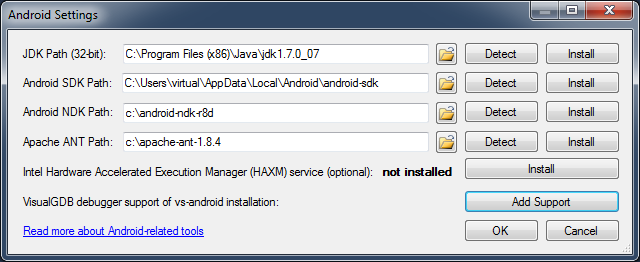 If you want to debug your vs-android projects with F5, you need to enable this feature here by pressing “Add Support”.
If you want to debug your vs-android projects with F5, you need to enable this feature here by pressing “Add Support”. - Open your vs-android project (in this example we use the san-angeles sample). Open the AndroidManifest.xml file inside the AndroidApk folder and set the android:debuggable attribute to “true”:
<application android:label="@string/app_name" android:debuggable="true"> <!-- Your activities are listed here --> </application> - In this tutorial we set a breakpoint inside the drawGLObject() function. You can set breakpoints anywhere in the code before and during debugging, just like in normal Visual Studio projects.
- Select Android->Debug Android App in Visual Studio:
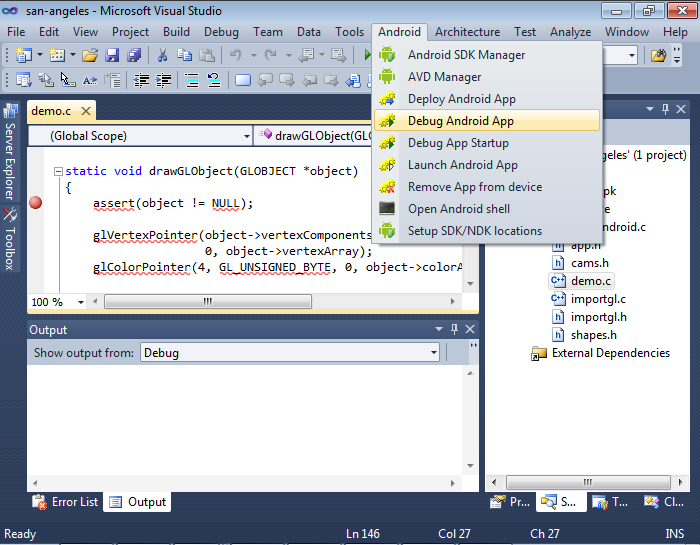 If the debug commands are not displayed, please select your project as startup project in the solution.
If the debug commands are not displayed, please select your project as startup project in the solution.
Important note: VisualGDB 5.0+ supports clang-based IntelliSense for vs-android projects. Read more in this tutorial. - If you encounter a message about inconsistent signature, please use the Android->Remove App from device command.
- If you are debugging the project for the first time, VisualGDB will detect that gdbserver is missing and suggest auto-installing it. Please click “yes”, then rebuild your project with Build->Rebuild Solution.
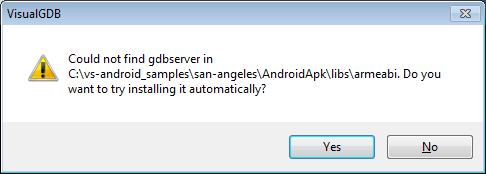 If you do not rebuild the solution, gdbserver will not be put inside the apk file and debugging won’t be possible.
If you do not rebuild the solution, gdbserver will not be put inside the apk file and debugging won’t be possible. - Click Android->Debug Android App again. VisualGDB will begin deploying your project and preparing the debugging session:
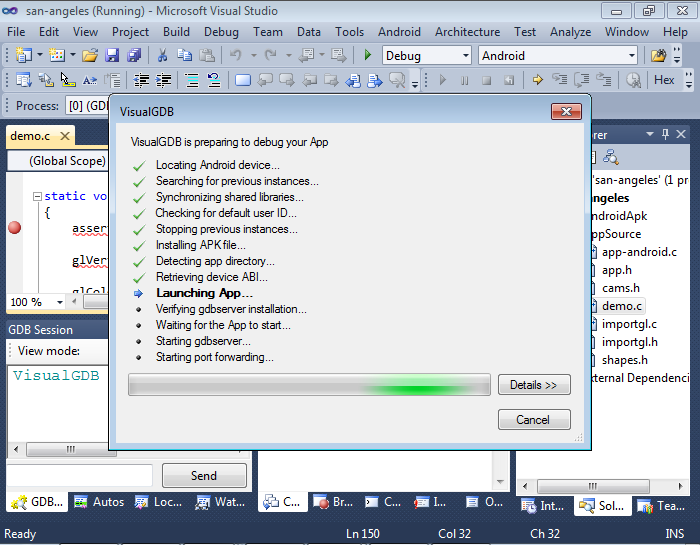
- If you have previously set a breakpoint at a location that gets executed, your breakpoint will be triggered:
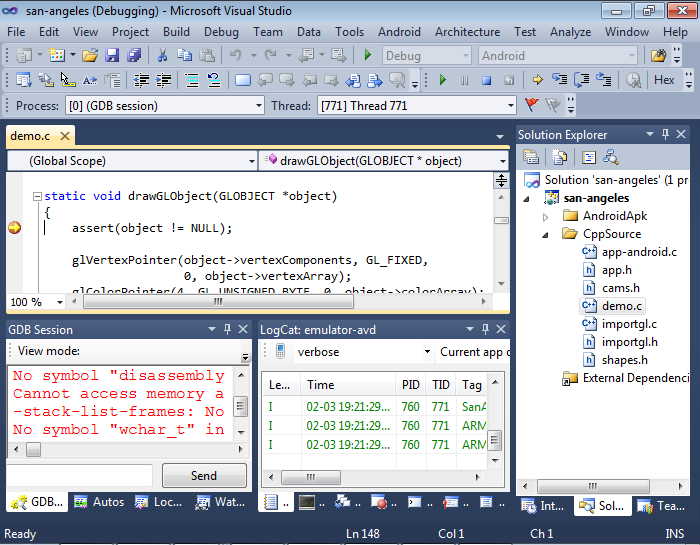
- Go to Project Properties, select Debugging page and ensure that you have VisualGDB Android Debugger selected:
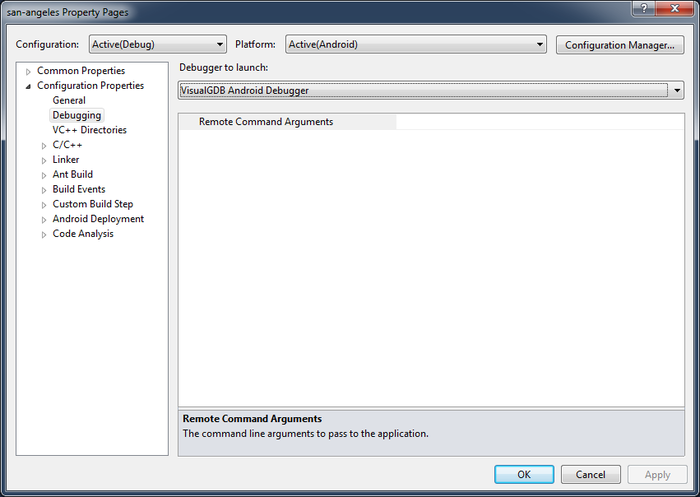 Note that the Android Debugger won’t appear in the list unless you enable it from the Setup NDK/SDK locations dialog.
Note that the Android Debugger won’t appear in the list unless you enable it from the Setup NDK/SDK locations dialog. - You can configure VisualGDB-specific settings for your vs-android projects by right-clicking on the project and selecting VisualGDB Project Properties:
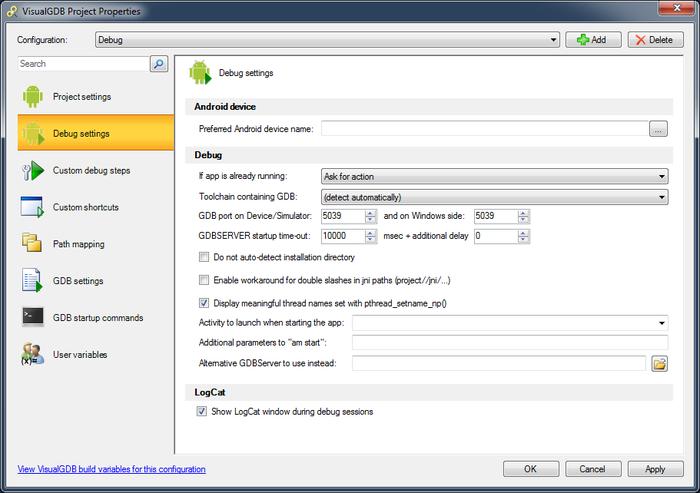
Congratulations! You can now debug your app. You can also setup Visual Studio to use the original NDK build system by following this tutorial.
